Australia So Much to See


Central Australia 2008. Continuing through Watarrka National Park to Kathleen Springs in the Kathleen Gorge.
Kathleen Gorge. A little further to the east from Kings Canyon and within Watarrka National Park is Kathleen Gorge. The
one and a half kilometre walk from the parking area into the gorge and the springs is along an easy bitumised path with a footbridge
over a creek and a viewing platform at the pool in the head of the gorge. It is suitable for wheelchair access.
Ernest Giles, Samuel Carmichael and Alec Robinson were the first Europeans to visit this area, arriving in 1872.
The abundant food plants and permanent water hole at the head of Kathleen Gorge were crucial to the nomadic Luritja people. The water attracted kangaroos and emus which were easily speared as they reached the dead end in the gorge.
The remains of a large tank can be seen just inside the opening in the range. Cattle would have fouled the water at the springs,
so they were fenced out, and water was pumped to this tank.
The remains of a large tank can be seen just inside the opening
in the range. Cattle would have fouled the water at the springs, so they were fenced out, and water was pumped to this tank.
Trap yards were built across a narrow section of the gorge in 1962. The area was de-stocked in 1983 when the area became theWatarrka National Park.
Depression and drought created conflict between pastoralists and displaced Aborigines. In 1896 Tempe Downs station moved 2500
head of cattle onto Reedy Creek and Kathleen Springs at a time when Aborigines were also converging on the well watered George Gill Range. Cattle spearing followed, and while there was some cattle spearing up to 1920, pastoralists also benefited from the skilled Aboriginal
stockmen.
Giles was later granted the first pastoral lease over an area which included the present day national park. In 1882 Giles sold
his lease, which later become part of Tempe Downs Station.
On meeting the Lasseter Highway, we turned west into the next part of our tour of Central Australia to see three big rocks.
Continuing our journey following Luritja Road in an easterly direction, we passed the junction of the Ernest Giles Road; a dirt road
which links Luritja Road to the Stuart Highway. Luritja Road turns south to meet the Lasseter Highway and around twenty
kilometres south of the junction we stopped for lunch at a rest area amongst lovely desert oaks. This is known as the Salt Creek
Rest Area and no amentiies are provided.
The permanent pool at the head of the gorge.
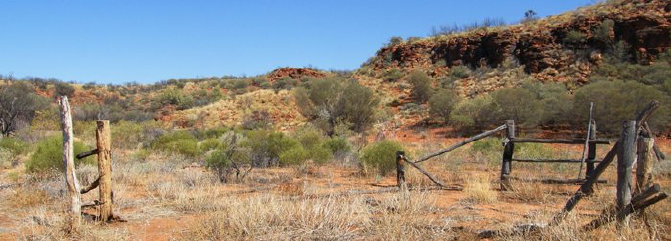
Part of the fence which ran from on side to the other of the narrow opening in the range to form a choral and trap the animals inside
when they came seeking water from the permanent waterhole at the end of the gorge.
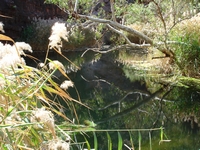
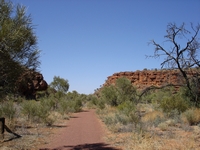
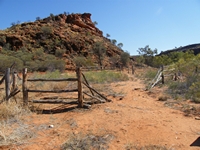
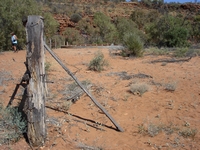
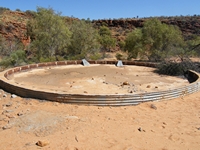
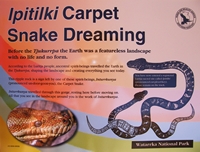
The Kathleen Gorge area has special meaning to the Luritja people as the gorge was formed by the Inturrkunya (the Carpet Snake) in
the Dreaming. We passed Ipitilki which is a place of special significance.
Copyright (C) 2013 AustraliaSoMuchtoSee.com. All rights reserved








